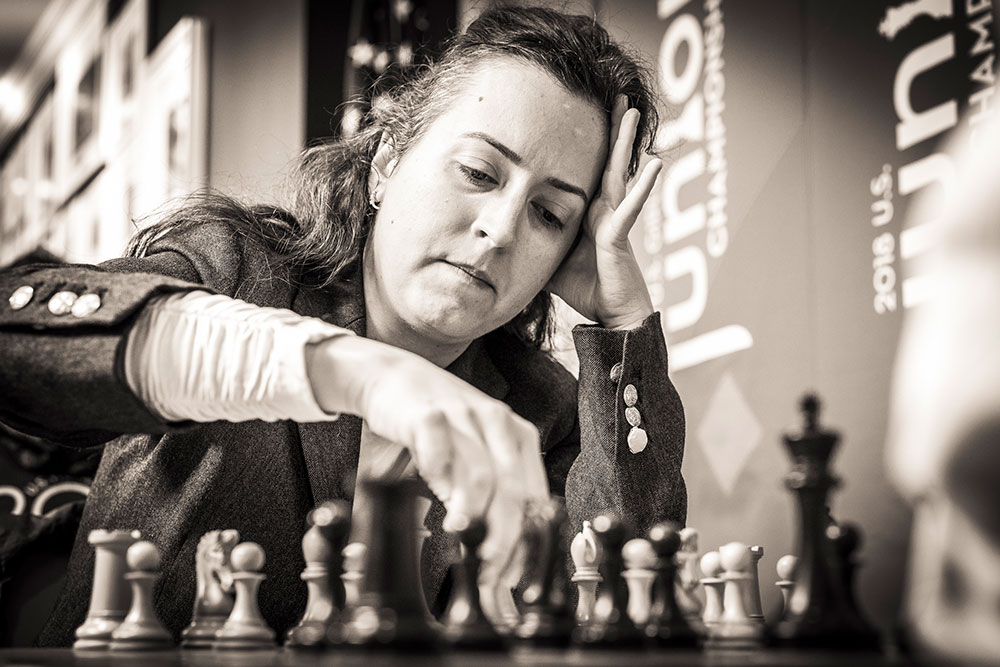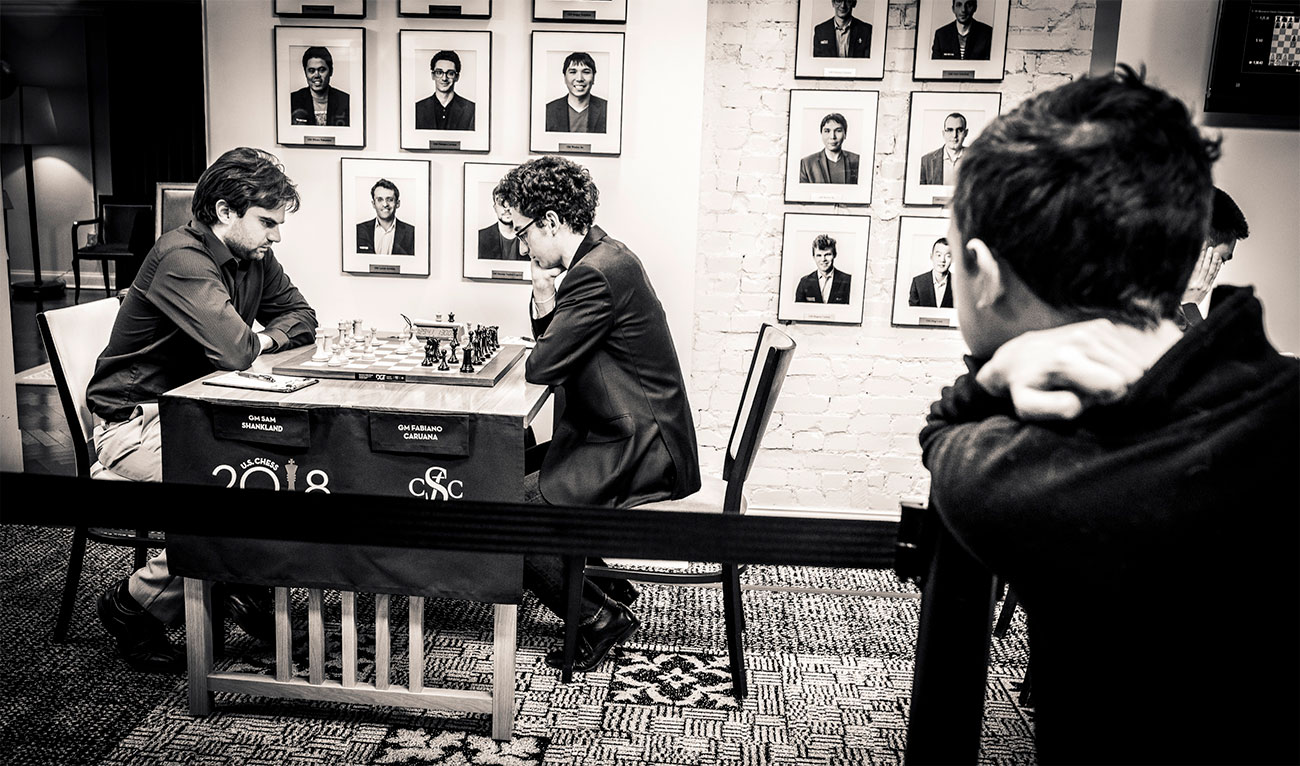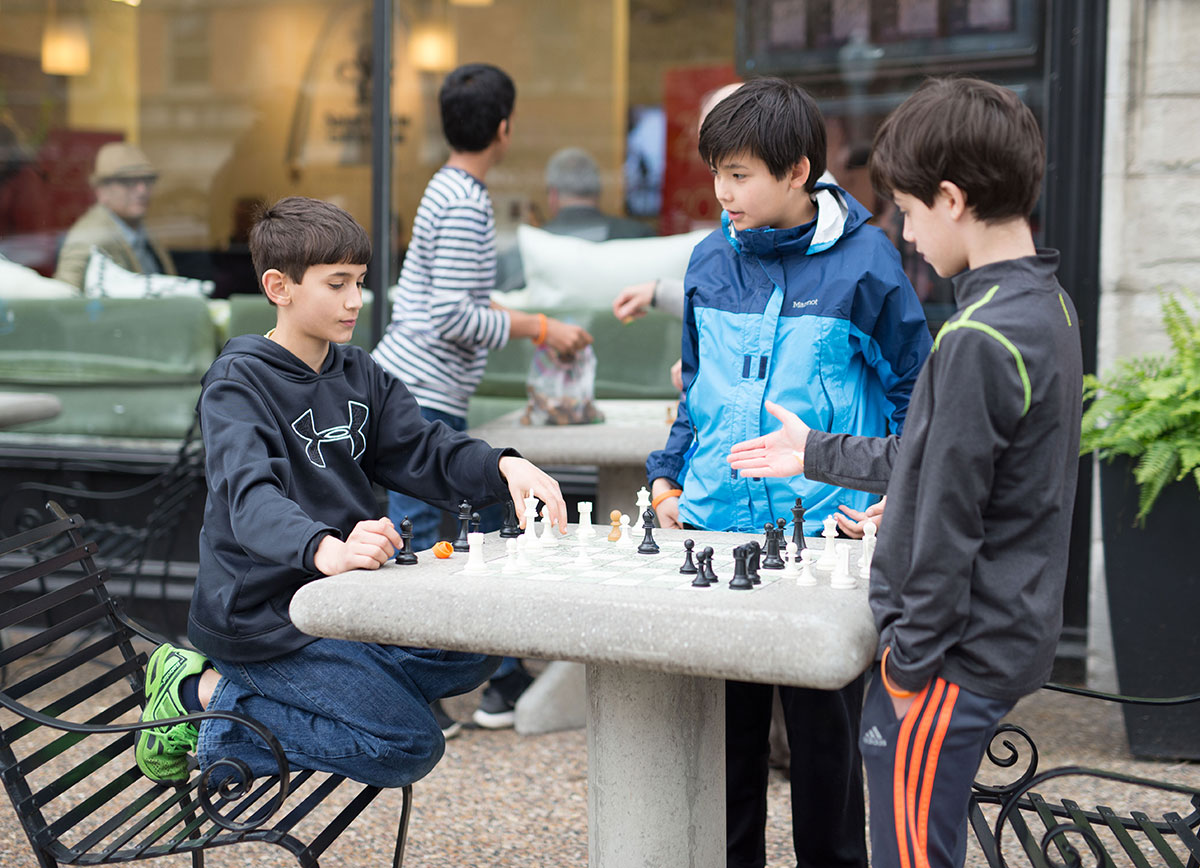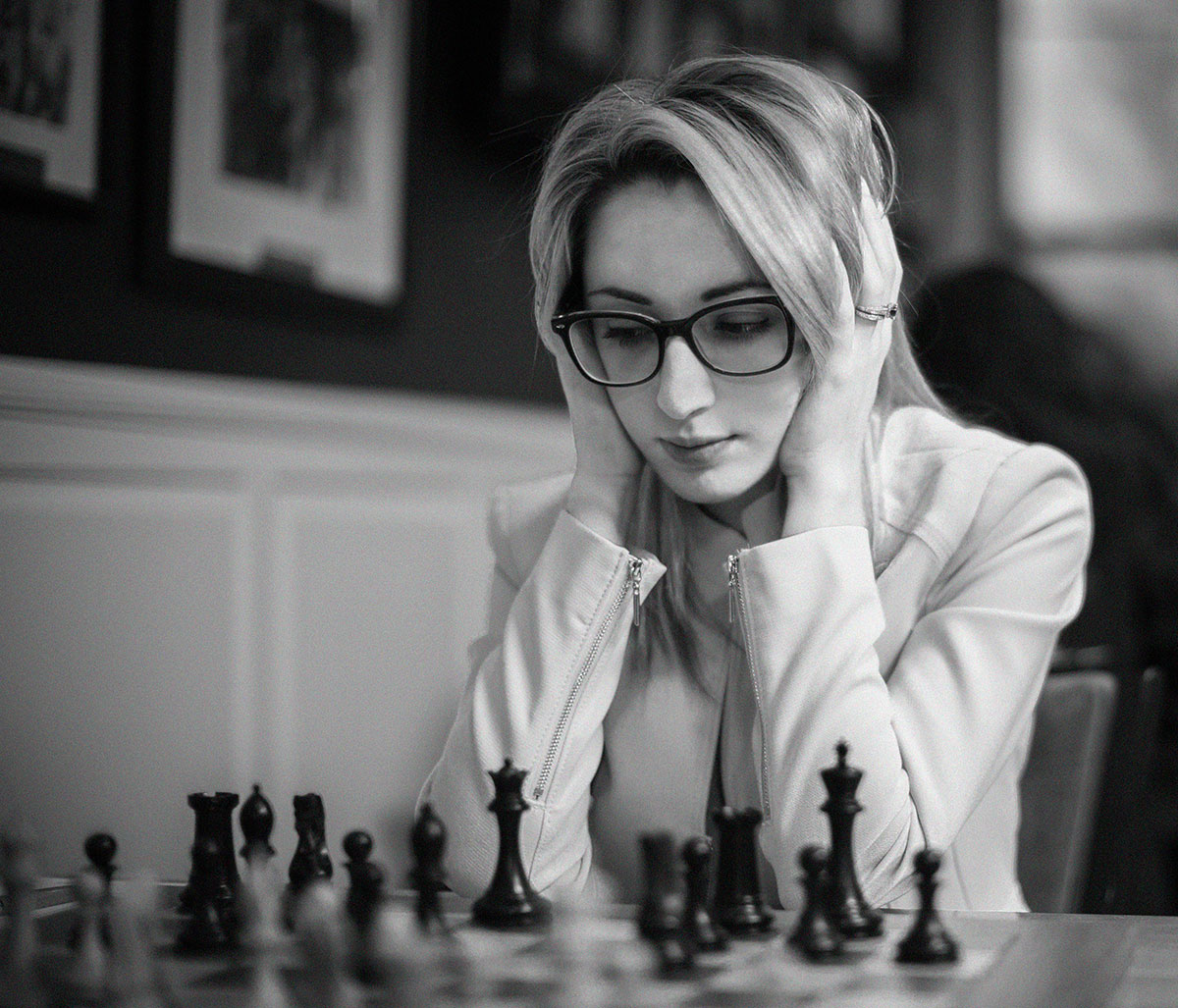


Strategy University Vol. 4: The technique of realising the win
Great players of the past used to say – the most difficult thing in chess is to win won positions! Every player has such problems – those at the top of the tree and (especially) juniors. The correct technique consists of proper exchange methods and of the continuation of a correctly chosen plan; it is important not to change strategy after a small material gain. The DVD shows and explains instructive mistakes made when trying to make extra material or a positional advantage count and in addition it demonstrates the correct techniques as employed in classic games.
In the Open section, there was really only one game that grabbed attention and deservingly so: the one between Sam Shankland and Fabiano Caruana. This isn’t because the other games were not played out, as several were, but because it was the only game that seemed a candidate for a full point.

Though not necessarily by design, the game between Sam Shankland and Fabiano Caruana was the highlight of the Open Section in round five | Photo: Lennart Ootes
Shankland had certainly booked up for his encounter with Caruana, and the Queen’s Gambit Accepted was only a mild surprise. What left him taken aback was the novelty on move eight, a fianchetto with …g6 and …Bg7 that had never been seen before. Had Fabiano’s home laboratory created a powerful new line that would open up new avenues of exploration for the future? Not quite, since within a half dozen moves Black was struggling to organize himself with a pawn ready to fall. Granted there seemed no easy way to take it immediately as Sam later explained, but grabbing the pawn was still a matter of when and not if.

The Queen's Gambit Accepted: A Repertoire for Black
In this DVD Sam Collins presents a repertoire for Black based on the Queen’s Gambit Accepted, 1.d4 d5 2.c4 dxc4. Rather than get involved in the heavy theory of the Classical Main Line, the lynchpin of the repertoire is the active development of the queen’s bishop. The resulting positions have close similarities to the Nimzo Indian and Slav Defences, and Collins explains the way for Black to approach the middlegame with confidence based on a blockade and light square strategy. The resulting repertoire is solid, reliable, and suitable as either a main weapon or an occasional surprise choice. Video running time: 3 hours 30 min
Maurice Ashley, after the game, noted to Fabiano that he had been unable to find this concept in any of the databases, and was this the product of his home preparation? “If it is, I have serious problems”, Caruana quipped wryly. No, this had been a poor inspiration at the board which he was to soon regret and spend the next several hours defending against the consequences.
Still, to his credit, he never lost patience, and took his lumps stoically as he avoided losing control of the game, and eventually drew on move 44.

Though Alexander Onischuk did emerge from the middlegame against Ray Robson up a pawn, the rook and opposite-coloured bishops in the endgame ensured nothing would come of it | Photo: Austin Fuller
The other games also ended in draws but never seemed to break out of the equality zone. Well played, but not terribly enthralling. With no wins to speak of, the leaderboard remains unchanged.

"What do you mean you don't know the Bubblegum Gambit?" | Photo: Austin Fuller
The headline of this article would most assuredly apply to the US Women’s Championship, since it might easily have been “Leaders lose in dramatic round!” This is no exaggeration either.
Nazi Paikidze was playing black against Irina Krush, who was dying to not only set their score straight, but also for the tournament standings as a win would mean an important step toward the podium. It was definitely a bad day at the office for Nazi, whose game suffered from poor opening play and not much better follow-up. Within less than 30 moves, she was dead lost with more than one road to victory available to Krush. Somehow, the final touch, that killer blow to put Black out of her misery never seemed to come. Paikidze was quick to shut that window of opportunity and in a difficult double-rook endgame, found an important defensive idea with 39…e5! That allowed her to hold.

A lifetime repertoire: Play the Nimzo Indian
This DVD provides everything you need to know to be able to play one of the most classical openings with Black, the Nimzo-Indian, arising after 1.d4 Nf6 2.c4 e6 3.Nc3 Bb4. Nearly every World Championship and top tournament features the Nimzo-Indian.

It was a tough day at the office, but Nazi Paikidze's defensive skills held up in the end | Photo: Spectrum Studios
After the game, Irina was clearly more than little irate and explained that it was nothing against her rival, who had shown excellent resilience and resourcefulness, but the missed chance. Watching a game she had played well, and conducted with logic to a happy conclusion, only to see that happy ending botched by a series of imprecisions that cost her the win. There isn’t a player alive that cannot sympathize.

Plenty of young fans came to the round on Sunday to admire and be inspired | Photo: Austin Fuller
Likewise, Annie Wang seemed to be ready to finally taste defeat in what has been a bit of a Cinderella campaign so far. She has been in trouble more than once but has somehow overcome these situations through sheer grit, and a dollop of luck. This was very much the tale of round five as well, as she was in a dead lost position, but due to poor time management on her opponent’s side, was able to keep the game alive and capitalize on the inevitable mistakes to save the game.